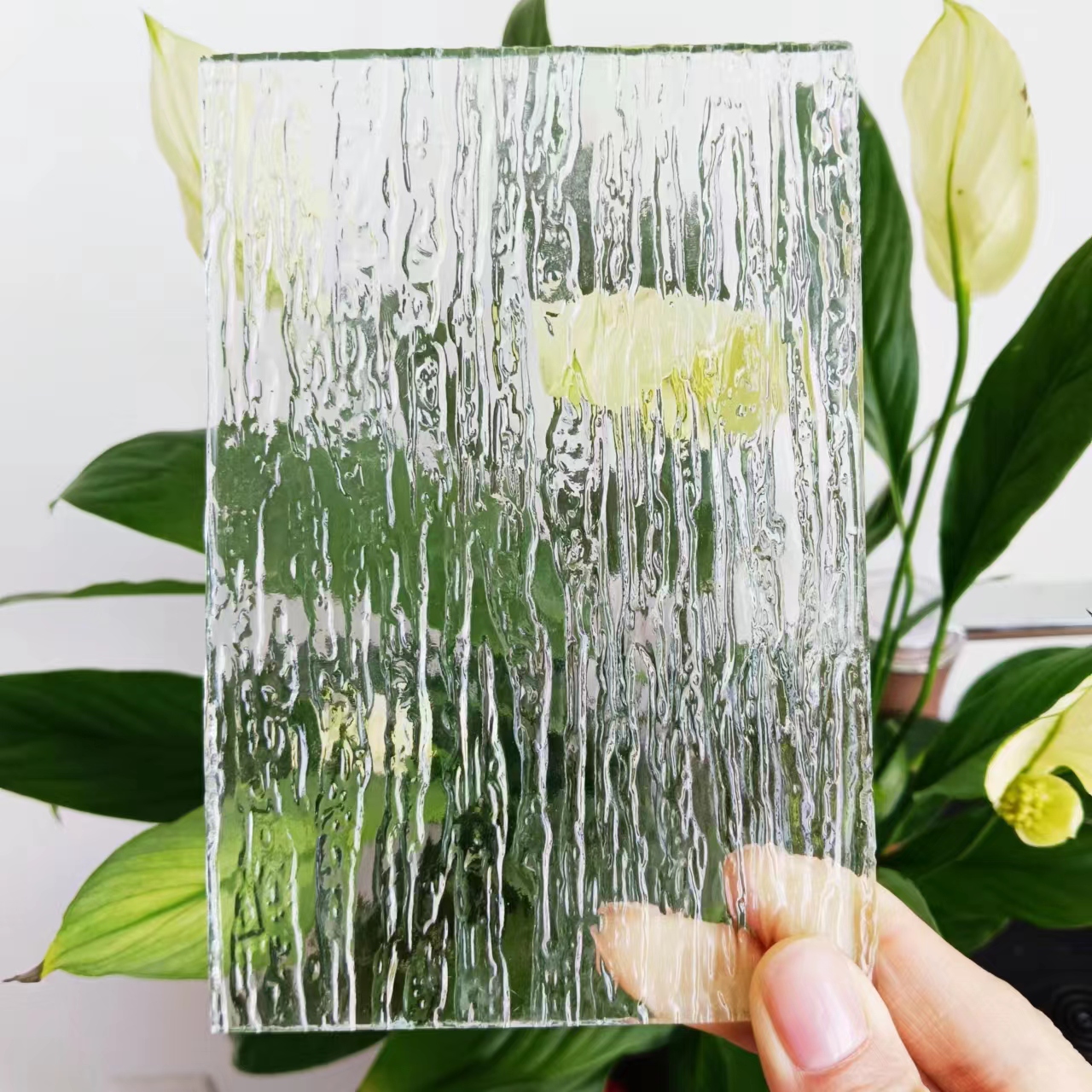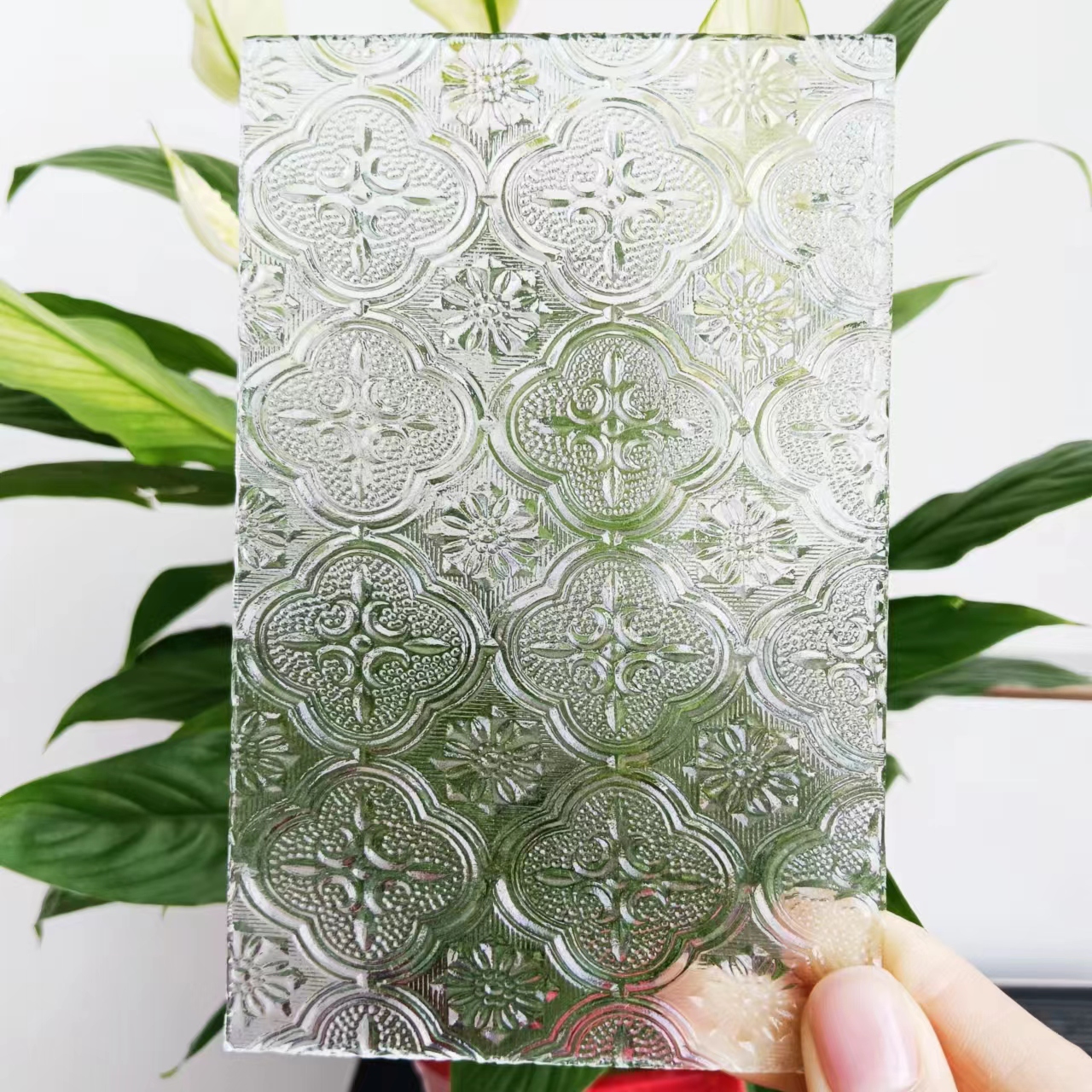Patterned Glass, Figured Glass, Rolled Glass, Embossed glass
Product Description
Embossing glass, also known as patterned glass or kroller glass, is a kind of flat glass made by calendering method. The manufacturing process is divided into single roller method and double roller method. The single roll method is to pour the liquid glass to the calendering forming table, the table can be made of cast iron or cast steel, the table or the roller is engraved with patterns, the roller is rolled on the liquid glass surface, and the embossed glass made is sent to the annealing kiln. Double roller production of embossed glass is divided into semi-continuous calendering and continuous calendering two processes, glass liquid through a pair of water cooling rollers, with the rotation of the roller pulled forward to the annealing kiln, generally the lower roller surface has concave and convex patterns, the upper roller is polishing roller, so as to make a single side of embossed glass with patterns. The surface of embossed glass has a variety of patterns with different depths. Because the surface is uneven, the light is diffused when it passes through. Therefore, when the object on the other side of the glass is seen from the side of the glass, the object is blurred, forming the characteristics of this glass without perspective, which can make the light soft and have the effect of protecting privacy. The embossed glass has a variety of squares, dots, diamonds, strips and other patterns on the surface, which is very beautiful, so it also has a good art decoration effect. Embossed glass is suitable for indoor spacing, bathroom doors and Windows and various occasions that need to block the line of sight.
Embossed glass is also a kind of flat glass, but on the basis of flat glass and then embossed processing, so in the choice and flat glass. Just in the choice of the need to consider the pattern of embossed glass beautiful or not, this has a lot to do with the personal aesthetic. In addition, some embossed glass is still colored, thus still need to consider and interior space color and design style coordination.
Benefits
Its wide range of patterns makes it highly suitable for decorative applications
Its surface patterns allow diffused daylight transmission but prevent visibility of activity, thus ensuring privacy.
Applications
Furniture & show shelves
Areas where visual screen is required, like bathrooms, doors and windows
Decorative illuminations
Products categories
-

Phone
-

E-mail
-

Whatsapp
Whatsapp


-

Top




















